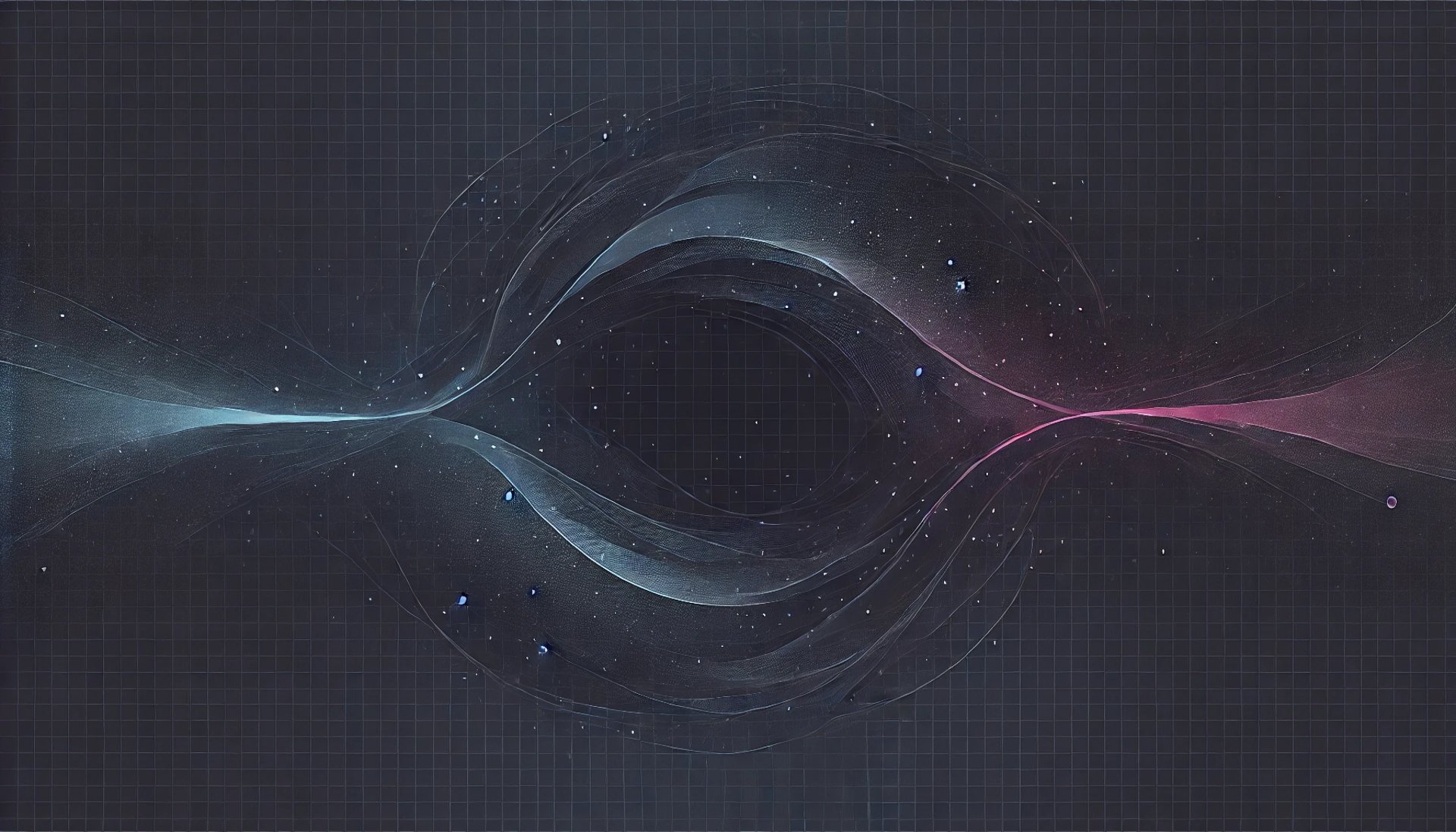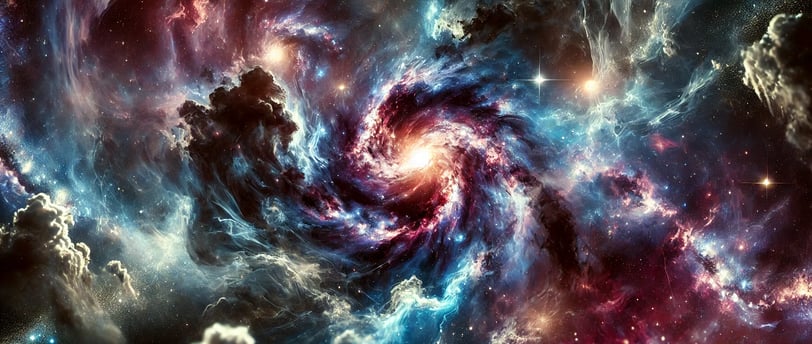Explore Dark Energy and Universe Expansion
Uncover the mystery of dark energy, the force behind the universe's accelerated expansion. Delve into its theories, evidence, and implications for the cosmos in this comprehensive exploration.
METAPHYSICS AND SPIRITUALITYMYSTERY & SUPERNATURAL.DARK LEGACIESPARANORMAL PHENOMENA
Billys Zafeiridis
11/22/20244 min read



The universe is a place of awe-inspiring beauty and staggering complexity. Yet, as humanity's knowledge of the cosmos has grown, so too has the realization that what we know is dwarfed by what we don’t. One of the most perplexing mysteries of modern astrophysics is dark energy, a force that seems to be pulling the universe apart at an accelerating rate. But what exactly is dark energy, and why does it matter?
In this blog, we’ll explore the enigmatic nature of dark energy, its implications for the universe, and why scientists are so determined to uncover its secrets.
What Is Dark Energy?
To put it simply: we don’t know.
Dark energy is the name scientists have given to the mysterious force driving the accelerated expansion of the universe. In the 1990s, astronomers studying distant supernovae discovered something unexpected. The universe wasn’t just expanding; it was expanding faster and faster over time. This baffled scientists because gravity, the force that holds galaxies together, should theoretically slow down this expansion. Instead, something was counteracting gravity on a cosmic scale.
This "something" is what we call dark energy, and it makes up an estimated 68% of the universe. To put that in perspective, everything we can see—stars, planets, galaxies—accounts for just about 5% of the universe. The rest? Dark matter (27%) and dark energy. Together, they form the vast, unseen majority of our cosmos.
How Do We Know It Exists?
You might be thinking, "If we can't see it, how can we be sure it's real?" Great question. Dark energy doesn’t emit light or interact with matter in any detectable way, but its effects are observable. Here are three key pieces of evidence:
Cosmic Microwave Background (CMB): The CMB is the afterglow of the Big Bang, a faint hum of radiation spread across the universe. By studying its variations, scientists can estimate the universe's composition and expansion history. The data aligns with the idea of a mysterious force driving accelerated expansion.
Supernova Observations: Type Ia supernovae—exploding stars of consistent brightness—act as cosmic mile markers. Observations of these supernovae reveal that distant galaxies are moving away from us faster than expected, suggesting an accelerating universe.
Large-Scale Structure of the Universe: The way galaxies cluster and the distribution of matter across billions of light-years point to the influence of an unseen force shaping the cosmos.
Theories About Dark Energy
Since dark energy defies direct observation, scientists have proposed various theories to explain its nature. Here are the leading contenders:
1. The Cosmological Constant
This idea, introduced by Albert Einstein, suggests that dark energy is an inherent property of space itself. Even in a vacuum, space has energy, and as the universe expands, more space—and thus more energy—is created. Simple, elegant, but is it the full picture?
2. Quintessence
Unlike the static cosmological constant, quintessence proposes that dark energy is dynamic, a field that evolves over time. Think of it as a fluid-like entity permeating the universe, with properties that could change as the cosmos grows.
3. Modified Gravity
Maybe dark energy doesn’t exist at all. What if our understanding of gravity is incomplete? Some scientists believe that tweaking Einstein’s equations could explain the accelerated expansion without invoking a new force.
Why Should We Care?
Dark energy isn’t just an abstract concept for astrophysicists to ponder. Its implications are profound and far-reaching. For one, it shapes the fate of the universe. If dark energy continues to drive accelerated expansion, the universe could end in a “Big Freeze,” where galaxies drift so far apart that the cosmos becomes a cold, dark, and lonely place.
Moreover, understanding dark energy could revolutionize physics as we know it. It might unlock new laws of nature or reveal hidden dimensions. Who knows? It could even lead to breakthroughs in energy technology, space travel, or something we can’t yet imagine.
Challenges in Studying Dark Energy
Despite decades of research, studying dark energy remains one of the greatest challenges in science. Why? Because it’s really hard to measure something we can’t directly observe. Here are a few hurdles:
Precision Measurements: Gathering data on the expansion rate of the universe requires highly sensitive instruments. Even slight inaccuracies can lead to wildly different conclusions.
Theoretical Limitations: Our current models of physics don’t fully account for dark energy. Reconciling it with quantum mechanics and general relativity is like trying to fit a square peg in a round hole.
Observational Barriers: Dark energy operates on the largest scales of the universe, making it difficult to study using traditional astronomical methods.
Current and Future Research
Despite these challenges, scientists are making progress. Advanced telescopes and missions are designed specifically to probe dark energy:
The Euclid Space Telescope: Launched by the European Space Agency, Euclid aims to map the geometry of the universe and measure how dark energy influences the growth of cosmic structures.
The Vera C. Rubin Observatory: Located in Chile, this ground-based telescope will conduct a 10-year survey of the sky, providing valuable data on dark energy’s effects over time.
The James Webb Space Telescope (JWST): Although its primary focus is on stars and galaxies, JWST’s observations will contribute to our understanding of the universe’s expansion history.
Final Thoughts: The Universe’s Greatest Puzzle
Dark energy is a reminder of how much we have yet to learn about the universe. It challenges us to think beyond the visible, to confront the unknown with curiosity and humility. Every discovery brings us closer to understanding not just the cosmos, but our place within it.
As Carl Sagan once said, “Somewhere, something incredible is waiting to be known.” Dark energy might just be that something.
By exploring dark energy, we’re not just pushing the boundaries of science—we’re unraveling the ultimate mystery of existence. Who knows what we’ll find? A new force of nature? A deeper understanding of reality? Or maybe answers to questions we haven’t even thought to ask yet.
Whatever the outcome, one thing is certain: the journey to uncover the secrets of dark energy will change humanity forever. And that’s worth the effort.
